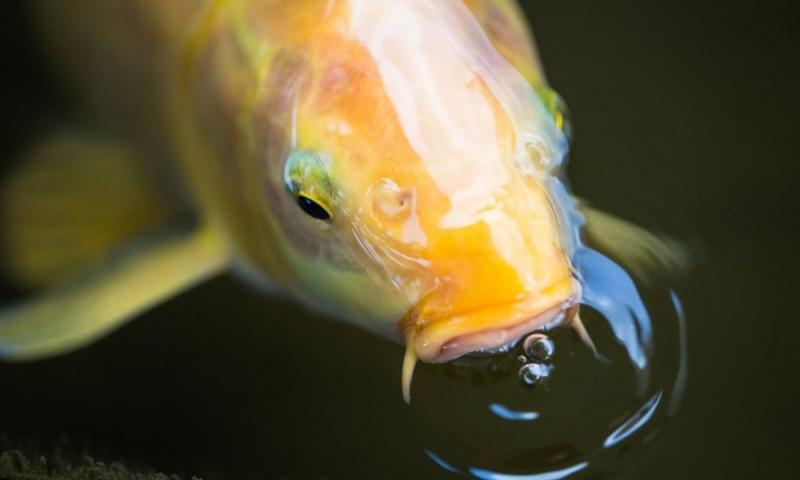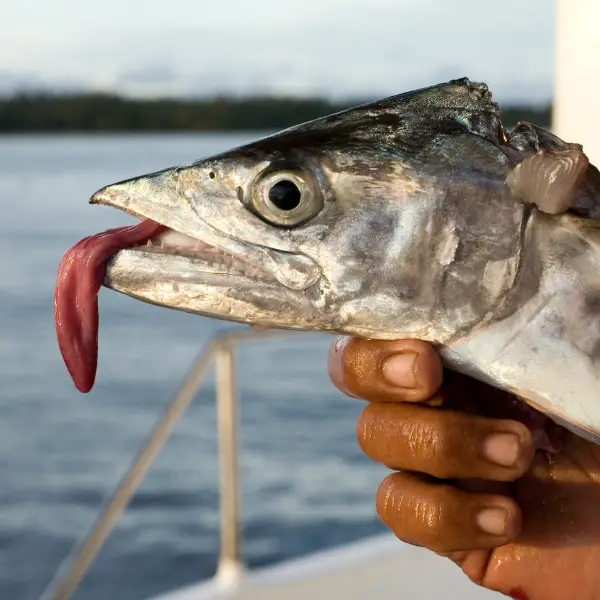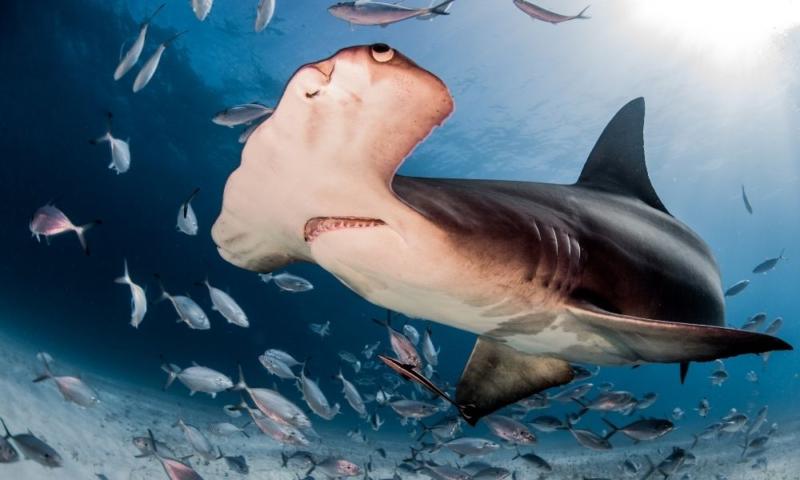Todays mouthwatering post is about fish! I recently wrote two articles about whether birds and Iguanas produce saliva or not as this is not always obvious. For fish, this question may be even more relevant as no can actually see them drool under water? But maybe you have seen a fish spit above water? This will all be answered in today’s exciting article!
Fish do not make saliva as they have no salivary glands, but they do produce mucus throughout their bodies, which is why fish feel so slimy when you touch them. They also produce this mucus in their mouths.
The buccal cavity, the space in an empty mouth of fish, secretes mucus to help with swallowing food. Mucus is only a lubricant and contains no enzymes to help with digesting food. The mucus is helpful in providing filter feeding, as the mucus sits on the roof of the mouth, and on the gills.

In other parts of the body, mucus production is a hugely important mechanism for mechanical protection, anti-infection, respiration, communication, nest building and parental care.
The coral-feeding tubelip wrasses have a unique adaptation, where their lips secrete a mucus which facilitates suction by forming a seal with the coral and minimizes damage from the sharp coral skeleton.
This mucus is also found in species of fish who mouthbrood. Mouthbrooding is a way to incubate offspring in the parental mouth.
This parental behavior is found in 9 families of teleost fish, which are a large and very diverse group of ray-finned fishes.
In mouthbrooding, this mucus may aid in lubrication, trapping of food particles, buffering of pH for digestion and provide a defense against pathogens.
But researchers are still trying to identify how and why oral mucus in mouthbrooders differs from non-mouthbrooders.
Can fish spit or drool?
In short, yes, fish can spit. But it’s not what you think.
One specific species, the archerfish, is renowned for their unique hunting strategy, which involves spitting mouthfuls of water. Here’s how it works.
The fish shoots water from its mouth at insects above water, to dislodge them from vegetation, allowing the archerfish to swoop in and eat them off the surface of the water from below.
New evidence also indicates that they use this technique underwater as well, shooting jets of water to disturb the sediment where prey may be hiding. They can shoot as far as 2 metres away above water, and between 6 and 40 millimetres away underwater.
You may have also seen fish spitting out their food. This can occur for several different reasons including:
If food is too big, fish can spit it out to break it down into smaller pieces; some fish, like Bettas and Siamese fighters, like to taste their food before eating it; and finally, the fish might not be hungry.
So, in conclusion, fish may be able to spit, but it’s not saliva they’re spitting out.
Scouring the literature and scientific articles, left me with no definitive answer as to whether fish drool or not. Not that the sources were divided, it was just never addressed.
Drooling is defined as saliva flowing outside of the mouth, unintentionally. Since fish do not technically have saliva, and live underwater, based on the above definition, it would seem impossible for saliva or mucus to unintentionally flow out of their mouths, as water is constantly flowing into their mouths.
Therefore, I don’t think fish can drool.
How do fish chew their food?
Most fish do not actually chew their food, instead swallowing it whole. All fish have teeth, but the mouth and type of teeth depends on the fish’s diet, environment, and what adaptations they need to be successful in that environment.
Teeth can be used to catch prey, holding them in place, orienting the prey headfirst to be swallowed, working the prey towards the esophagus, and for tearing the prey into smaller pieces.
Most fish have conical teeth on the jaws, roof of the mouth, or back of the throat.
Carnivorous fish, meaning those who eat meat, typically have sharp teeth to capture their prey.
Fish who live on the bottom of bodies of water, known as ‘bottom-dwellers’, such as the sunfish and sheepshead, have large flat molars at the back of their throat to crush shellfish, like clams and snails, to eat.
They crush the shells, and then swallow the soft bodies of the shellfish.
Herbivore fish are the only type of fish that ‘chew’ their food. Their ‘teeth’ are used to grind their food, but are located in their throat, called pharyngeal teeth. Two examples are the surgeonfish and parrotfish.
Many fish don’t use their teeth at all when eating their food. They will instead vacuum up their food.
They do this by opening their mouths and expanding their buccal cavity, which is the space between the mouth and the gills. This creates an area of low pressure in their mouths, causing water to rush into their mouths to equalize the pressure.
The fish then close their mouths, and expel the water out of their gills, leaving the prey trapped in their mouth. They then swallow the fish whole.
The food begins breaking down in the esophagus, rather than the mouth since fish have no salivary enzymes and continues in the stomach.
How do fish use their tongue?
Fish use their tongue muscles to push food backwards, further into the mouth. This is different from humans, who use their tongues to position food for chewing.
Fish don’t need to move food around the mouth like humans, because food items remain buoyed by the water, food also moves through the mouth towards the esophagus from water flow and tooth placement.
Additionally, the tongue moves oxygenated water through the mouth towards the gills, enabling the fish to breathe.

Most fish have a structure that physically resembles a tongue, but the purpose of which is actually very different from that of a human tongue. Most fish have a bony structure, called a basihyal, located on the floor of the mouth, which physically resembles a tongue.
The basihyal doesn’t have taste buds, has very little range of motion, and isn’t muscular. The ‘tongue’ is a thick, horny, immovable pad in lower jaw, often dotted with small teeth.
There are some fish species that have more movable tongues than others.
It is believed that the basihyal initially evolved to protect the ventral aorta from being damaged from large, wriggly food, as the mouth and ventral aorta are very close together.
Do sharks have saliva?
Sharks are also fish and obligate carnivores, meaning their diet is entirely composed of meat. So like other fish, sharks do not have saliva.
While sharks do have a tongue, they lack salivary glands to produce any saliva. Sharks swallow their food whole, only using their teeth for tearing off pieces of meat, rather than to chew the food.

They swallow using a backwards shrug of the shoulders, which creates suction necessary to draw food down into the digestive tract.
Therefore, sharks have no need for saliva and its enzymes to help break down or swallow the food.
Do whales and dolphins make saliva?
An interesting example that really underlines why fish don’t need saliva, is the fact that the Cetaceans (whales and dolphins) don’t have saliva anymore.
Anymore? Yes! Unlike sharks, whales and dolphins are mammals (like you!) and they evolved from land dwelling creatures that used to make saliva.
However, when whales and dolphins transitioned from a life in water, there was no longer a need for saliva anymore.
Recent research has shown that the “saliva gene” was simply lost when the ancestors of modern day whales and dolphins entered the sea.
Huelsmann,et al 2019. PNAS.
This is likely because one of the primary functions of saliva is lubrication and because it would be washed away in the water anyways (and thus be a waste of energy to produce).
Conclusion
In summary, there is no evidence that fish produce spit or saliva in the same way as we know it from most mammals. This makes sense, when considering that one of the main functionalities of saliva is to lubricate the digestive tract, which is not needed in aquarius settings.
And because this function was lost in the ancestors of modern whales, it strongly suggests that saliva is no longer beneficial for animals that spend their life submerged in water – including whales and sharks!




